Fourth of July flag flew at sea in 1944
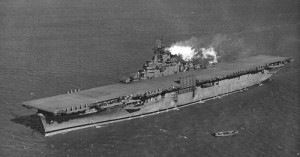
For 240 years, the Fourth of July, which marks the debut of the Declaration of Independence in 1776, has been a special day for American flags.
On that date in 1944, as World War II continued to rage, a newspaper printed aboard the USS Essex published an editorial titled “Independence Day 1944.” Read in the context of that time, the editorial takes on a deeper meaning, especially in its last sentence.
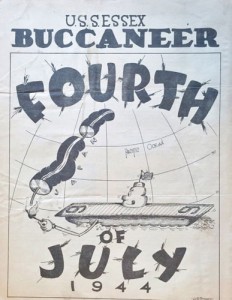
The Essex, an aircraft carrier, was in the process of being built when Pearl Harbor was attacked in December 1941. Its construction schedule was accelerated, and the ship was launched the following July. Throughout the remainder of the war, it took part in several battles, including Okinawa and Leyte Gulf, as it sailed west across the Pacific.
The unsigned editorial appeared in Buccaneer, the ship’s newspaper. The cover showed a cartoon carrier lighting a firecracker while a flag flies from a mast.
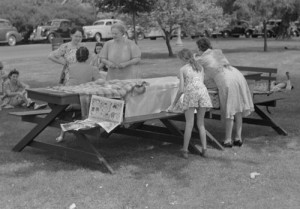
“This year,” the article began, “we look back at the gala July 4th holidays we knew in the past with a sigh of regret. We recall family reunions, great stone crocks of ice cold lemonade, home fried chicken peeping from under the clean cover of a picnic basket and a lot of fun…while we frivolously overlooked the true meaning of the day.”
Putting aside nostalgia, the author turned his mind to reality. “The present grim war is a real reminder that we have to work to get lemonade, the chicken, the reunion and all we enjoyed in the past,” he wrote. “We have to fight for the things we want and for the celebrations we and our loved ones will enjoy in the future.”
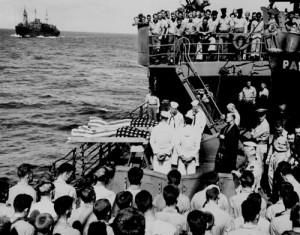
That wish will be fulfilled only if “we are alert on all the battle lines,” he continued. “We are sure that…our loved ones will be able to take a lot of honest pride in saying that we are truly worthy of the traditions found in the 150 years of American Independence.”
Unaware that a kamikaze pilot would soon crash into the carrier, killing 15 sailors, but no doubt ready for what might come, the editorialist affirmed that “ours is a must job – also it is glorious and our reward will be found in the annals of the fleet if we do the job that is to be done day by day.”
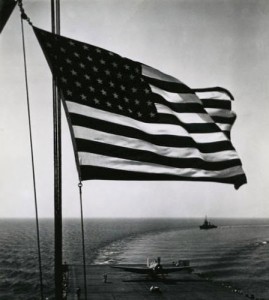
Turning his eyes to the mast on his vessel, the author concluded his remarks with these words: “Don’t you think ‘Old Glory’ is just a little more beautiful flying at the staff today?”
This Fourth of July, that’s a question all of us should answer in the affirmative.
